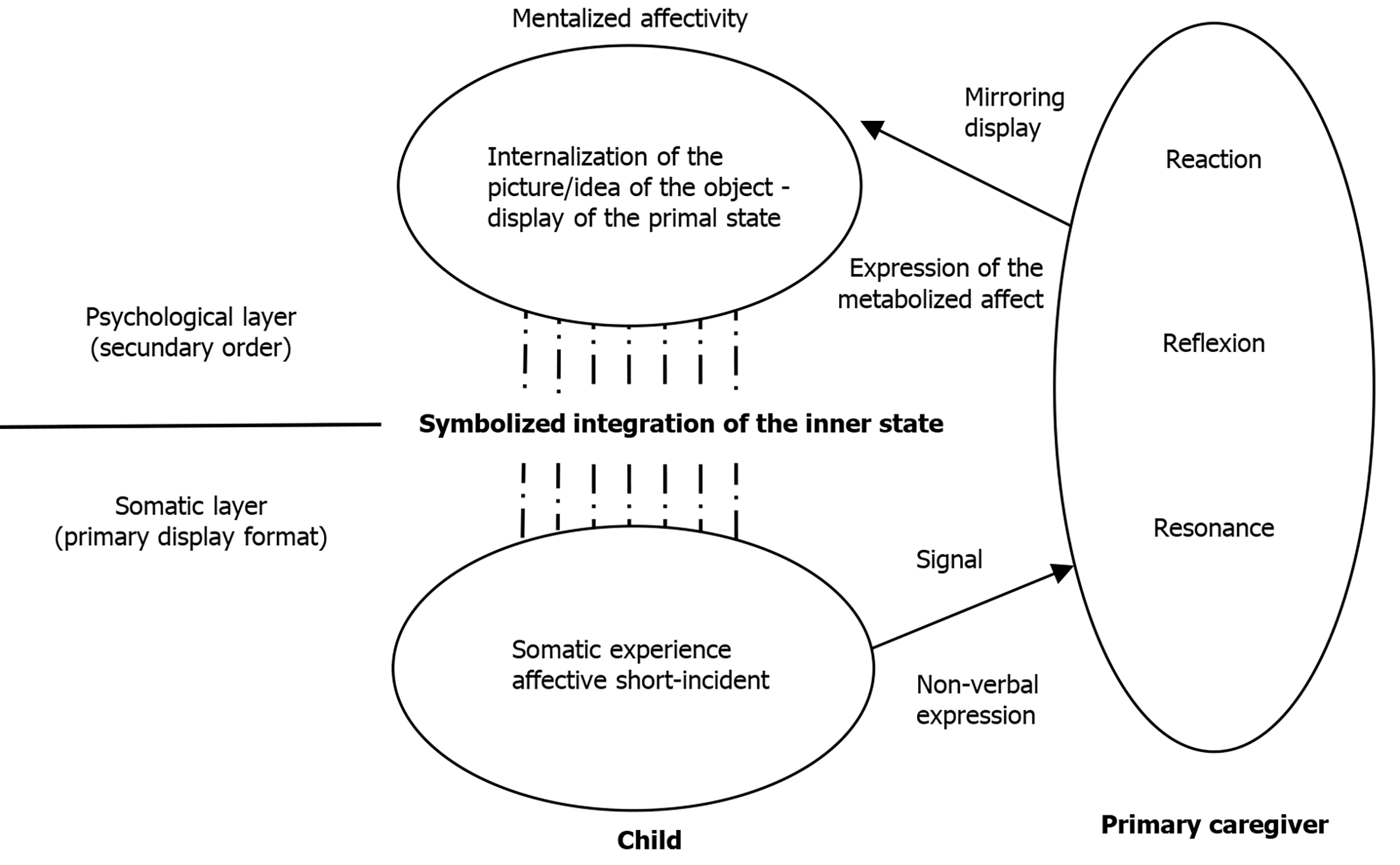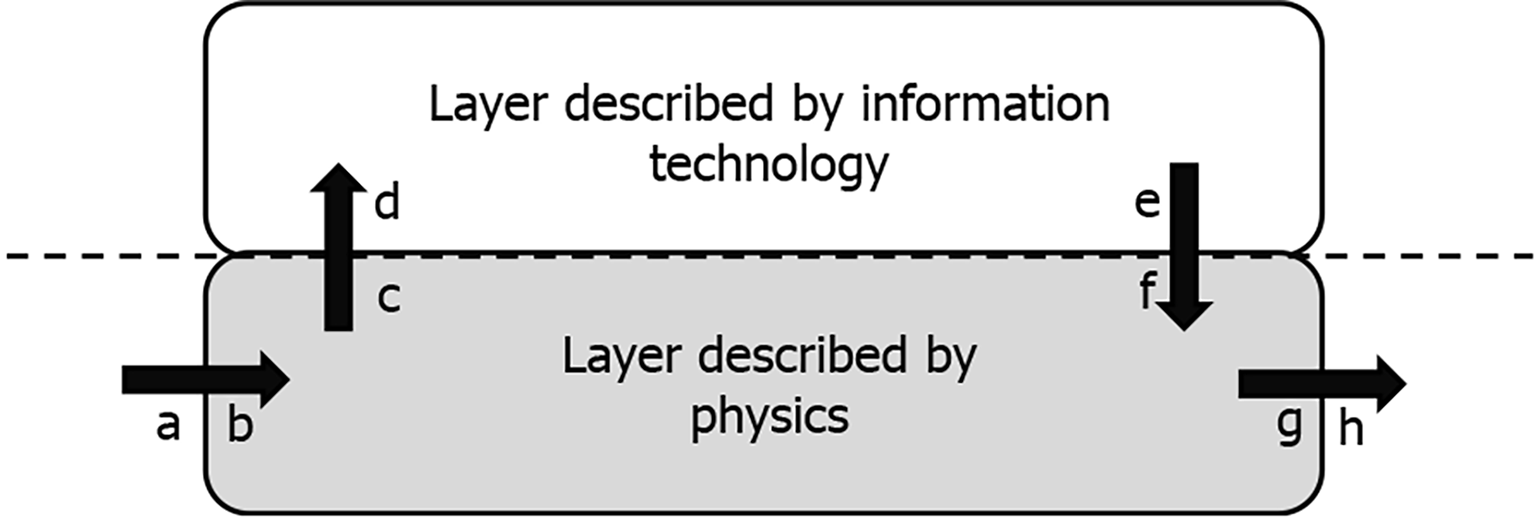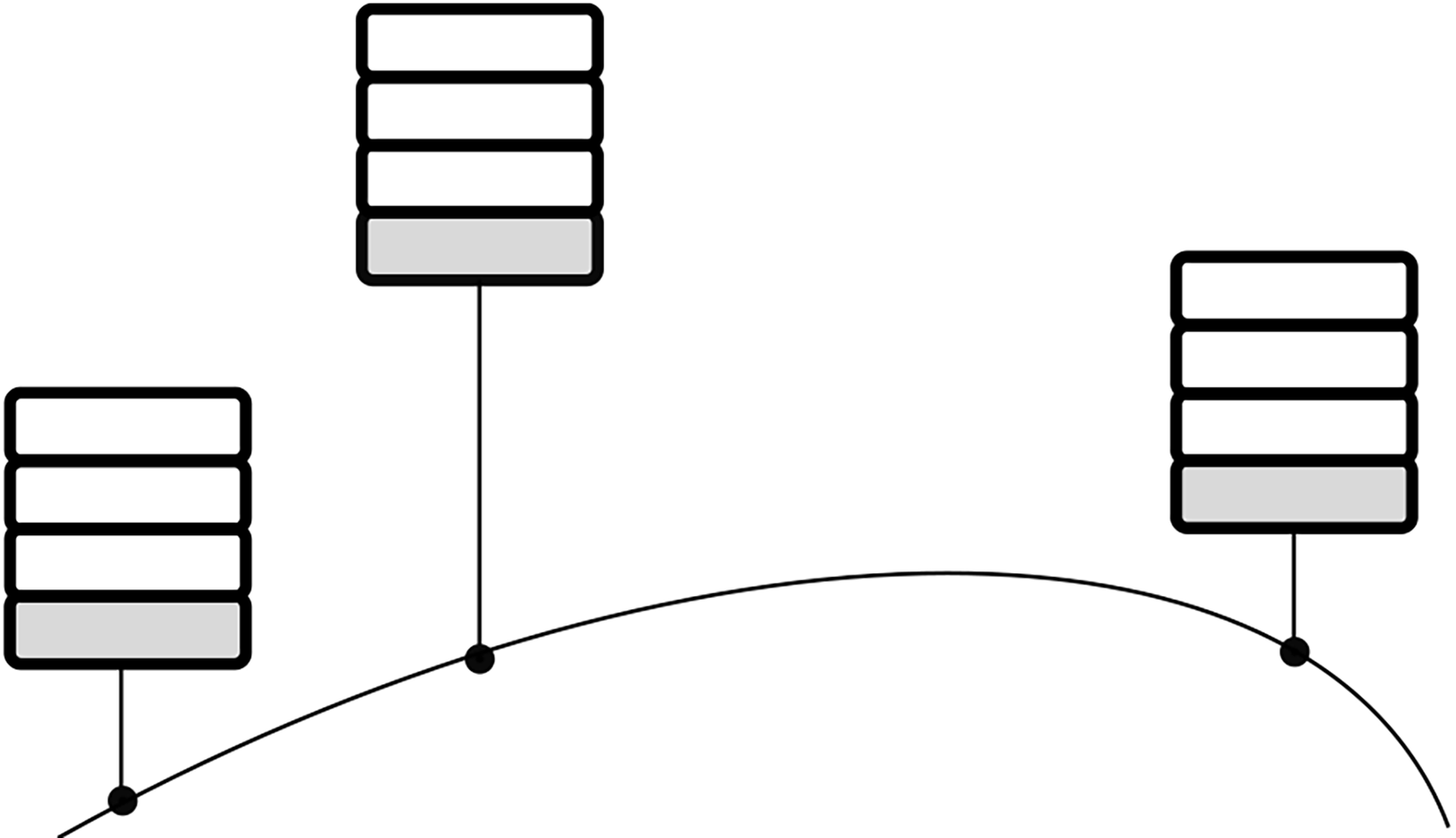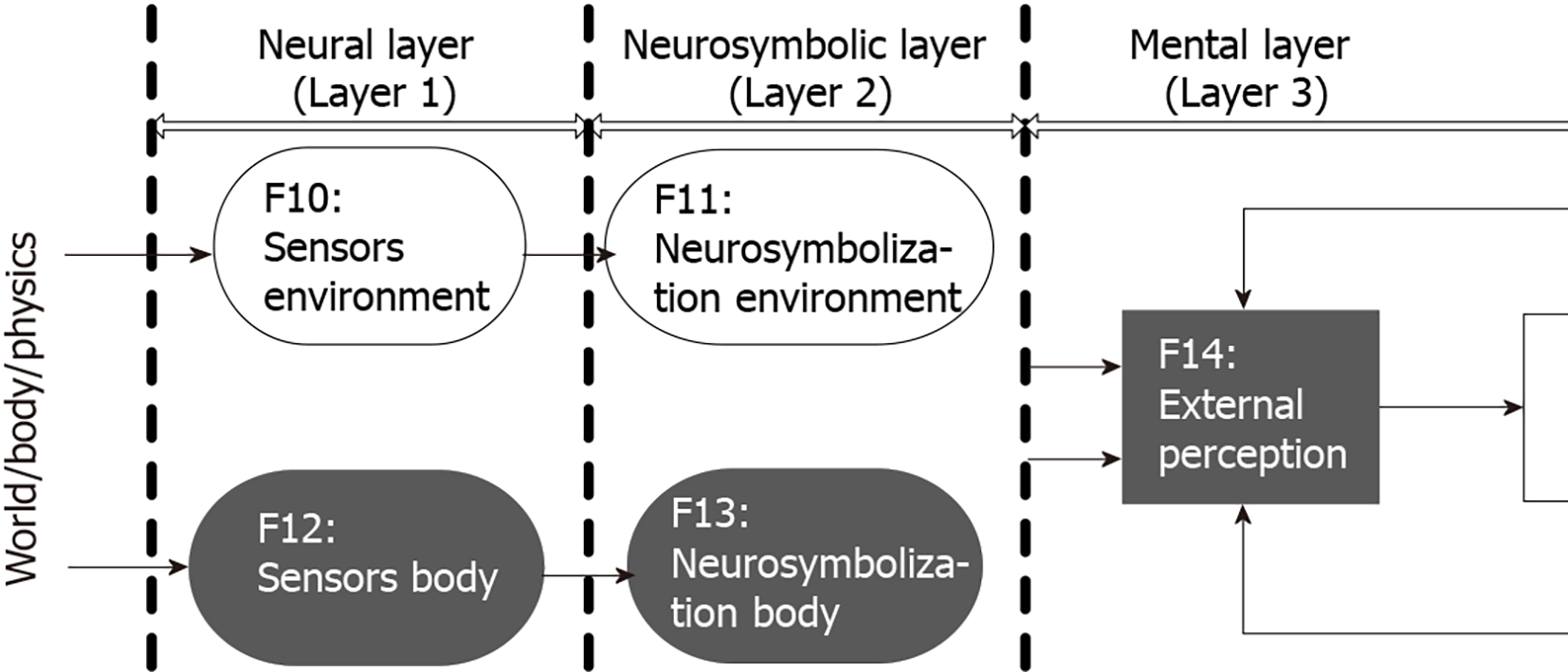Copyright
©The Author(s) 2021.
World J Meta-Anal. Dec 28, 2021; 9(6): 474-487
Published online Dec 28, 2021. doi: 10.13105/wjma.v9.i6.474
Published online Dec 28, 2021. doi: 10.13105/wjma.v9.i6.474
Figure 1 The emergence of mentalized affectivity.
Mutual interactions between caregiver and child are shown as a process where the caregiver infers the inner thoughts and affective states through signals expressed by the child (and the contextual information and knowledge available). At first, the child notices a somatic experience and expresses it nonverbally to the caregiver as a signal. Then, the caregiver metabolises this signal (resonance, reflection, reaction) and communicates an expression of this metabolized affect to the child (mirroring display). In the next step, the child internalises this reaction of the caregiver in response to its own experience as a picture/idea of the primal state. In such a way a transformation from a somatic experience to an integration of the child’s inner state is acquired via symbolisation in repeated social interaction.
Figure 2 Vulnerability and psychodynamics.
Figure 3 Mealy model.
Current state and current inputs determine the Mealy model’s output values. A mealy machine consists of a finite set of states, inputs and outputs and a transition as well as an output function. The model produces an output (h) while an input (a) is received (in the same simulation step). In this figure the real circuit is conceptually split into two layers: the physical layer (rectangle shaded in grey) and the information layer (rectangle shaded in white). The interface between both layers (dashed line) is defined by the information flowing through them. An abstract concept of the transition between the two layers (information technology and physics) is shown.
Figure 4 Possible coupling of computers according to ISO/OSI.
Each column in this figure represents such an ISO/OSI model with hierarchically arranged layers. The lowest layer (rectangle shaded in grey) is always the physically described layer, which defines the (physical) connection to the other computers. The upper layers of the columns in this figure are the units described in terms of information technology (rectangles shaded in white: the upper layer in the Mealy model is subdivided into several layers as required, with functions allocated within according to the specific tasks). ISO: International Organization for Standardization; OSI model: Open Systems Interconnection model.
Figure 5 Excerpt from the simulating the mind and applications model.
The functions relevant for the processing of somatic pain are shown (marked in dark grey).
Figure 6 Creation of pain perception from the body sensors of the agent[62] Neural layer (layer 1): functions F12 generate the sensory inputs to the body (health sensor states/registering changes).
Neurosymbolic layer (layer 2): this sensor value is then transferred to F13 which extracts symbols, containing actual values as well as connections to the symbol health status. Mental layer (layer 3): all this information is provided to the mental layer and further processed in F14 which generates a factual perception related to the representation of pain (i.e., unpleasure correlated to the pain level).
- Citation: Löffler-Stastka H, Dietrich D, Sauter T, Fittner M, Steinmair D. Simulating the mind and applications – a theory-based chance for understanding psychic transformations in somatic symptom disorders. World J Meta-Anal 2021; 9(6): 474-487
- URL: https://www.wjgnet.com/2308-3840/full/v9/i6/474.htm
- DOI: https://dx.doi.org/10.13105/wjma.v9.i6.474


















